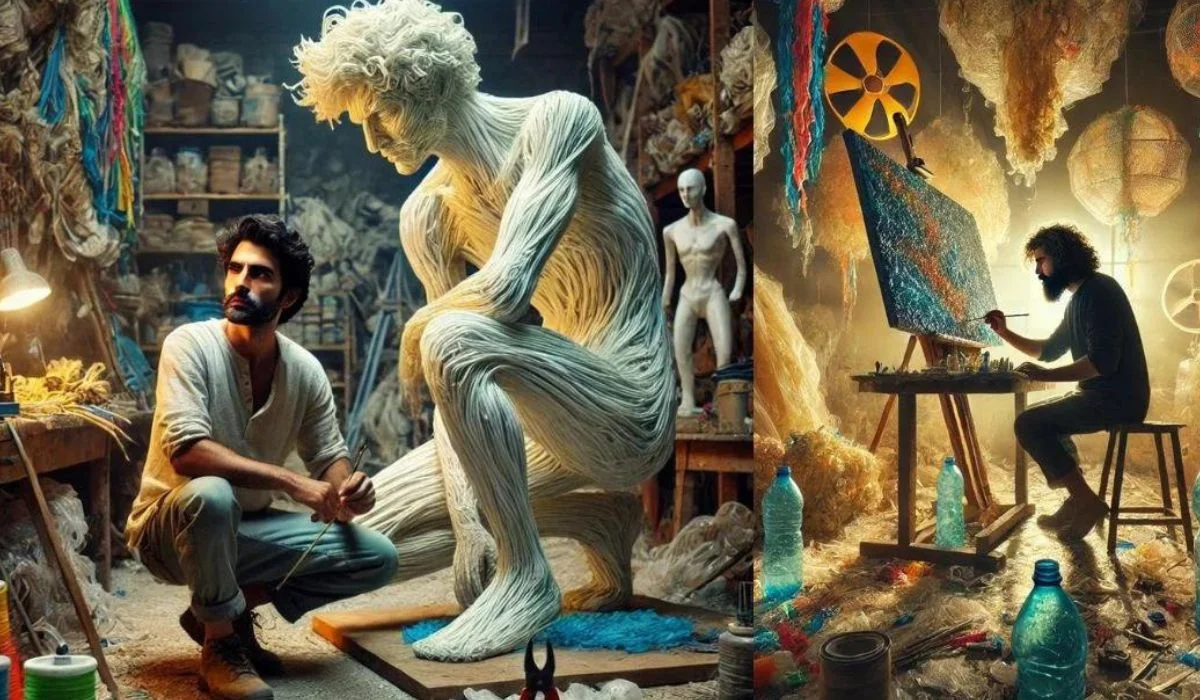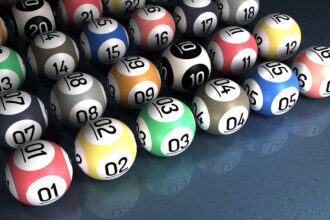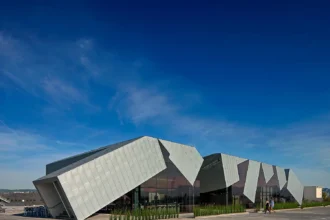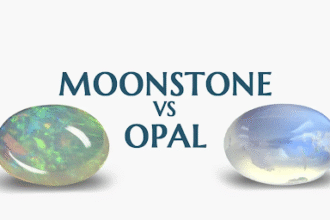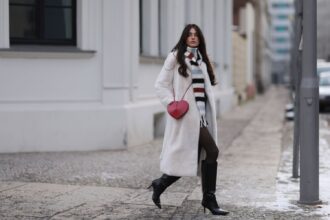Introduction to Khalil Chishtee
Art has long been defined by its beauty, elegance, and aesthetic appeal. https://multigrafico.com/khalil-chishtee-no-todo-el-arte-es-belleza/ But what happens when an artist challenges this conventional view? Enter Khalil Chishtee—a name that resonates with innovation and defiance in the art world. With his unique vision, Chishtee invites us to see beyond traditional boundaries and explore a realm where art transcends mere visual pleasure. His works prompt us to question our understanding of beauty itself and encourage deeper reflection on the meanings behind creativity. As we delve into his unconventional approach, prepare to have your perspectives on art reshaped like never before.
The traditional view of art and its focus on beauty
Art has long been viewed through a narrow lens, primarily focused on beauty. The classical definition tied aesthetic appeal to artistic value. Masterpieces were often celebrated for their visual harmony and pleasing forms.
This traditional perspective emphasized skill in technique and adherence to established norms. Artists who produced work deemed beautiful garnered admiration and recognition. They became the gatekeepers of what was considered worthy in the art world.
However, this obsession with beauty can be limiting. It overlooks the emotional depth that art can convey beyond mere aesthetics. Many artists sought to challenge these conventions by exploring themes of struggle, identity, and social commentary.
As society evolved, so did perceptions of art itself. A new wave began questioning whether beauty should remain the sole criterion for evaluating artistic merit or if deeper narratives deserve equal appreciation.
Chishtee’s unconventional approach to art
Khalil Chishtee challenges conventional artistic norms with his bold approach. Instead of relying solely on traditional mediums, he embraces the unexpected. This reflects a deep desire to provoke thought and discussion.
His work often incorporates found objects. From discarded materials to everyday items, these elements transform into profound statements about society and culture. By repurposing what many consider trash, Chishtee elevates them to art status.
This unconventionality extends beyond materials. His techniques blend various styles, merging sculpture with installations that invite viewers to engage actively. Each piece becomes an experience rather than just a visual feast.
Chishtee’s perspective reshapes how we define creativity itself—art does not have to conform to beauty standards or elite traditions. It can evoke emotions, challenge perceptions, and inspire change through its raw authenticity.
His use of unconventional materials and techniques
Khalil Chishtee’s artistry defies conventional norms through his bold choice of materials. He often incorporates elements that many would overlook—such as discarded plastics, metal scraps, and organic matter. This not only challenges the viewer’s perception but also sparks conversations about sustainability in art.
His techniques are just as groundbreaking. Using methods like casting and assemblage, Chishtee transforms mundane objects into thought-provoking pieces. Each artwork tells a unique story, weaving together narratives from diverse cultures and experiences.
This approach invites viewers to reconsider their definitions of beauty. By embracing imperfection and repurposed items, he creates a dialogue between art and the environment—a reflection on consumerism and its impact on society.
Chishtee’s work becomes an exploration rather than mere decoration; it encourages engagement with complex themes rooted in contemporary issues. Through this lens, he redefines what it means to be an artist today.
The deeper meaning behind his artworks
Khalil Chishtee’s artworks resonate on multiple levels, inviting viewers to delve deeper into their significance. Each piece serves as a commentary on the human experience, often intertwining themes of identity, culture, and societal issues.
His use of unconventional materials adds layers of meaning. For instance, discarded objects reflect notions of waste and consumption in modern society. They challenge us to reconsider what we deem valuable.
Chishtee doesn’t shy away from addressing uncomfortable truths. His work prompts discussions about marginalization and resilience. By incorporating personal narratives into his creations, he creates a space for empathy and understanding.
The visual impact is striking, but it’s the underlying message that lingers long after viewing. This complexity encourages audiences not just to appreciate art for its beauty but to engage with its narrative power and transformative potential.
Criticisms and controversies surrounding Chishtee’s work
Khalil Chishtee’s work has not been without its share of critics. Many traditionalists argue that his unconventional materials, such as discarded plastics and organic waste, undermine the sanctity of fine art. They view these choices as a rejection of craftsmanship.
Controversies also arise from the interpretations of his pieces. Some viewers find them challenging, even disturbing, prompting debates about what qualifies as “art.” This discomfort can polarize audiences.
Moreover, Chishtee’s bold themes often provoke discussions around social issues like environmental degradation and cultural identity. Detractors claim he is more focused on shock value than artistic merit.
Yet this very tension fuels dialogue within the art community. The pushback against Chishtee encourages deeper exploration into how we define beauty and meaning in contemporary art—a conversation that continues to evolve.
Impact on the art world and perspective shift on beauty in art
Khalil Chishtee’s work has sparked a significant dialogue in the art community. His approach challenges traditional norms surrounding beauty.
Many artists and viewers are now questioning what defines art. Is it purely about aesthetics, or is there more beneath the surface? Chishtee’s unconventional techniques invite deeper contemplation.
His pieces often evoke strong emotional responses, forcing audiences to confront uncomfortable truths rather than simply admire form and color. This shift encourages a broader definition of beauty—one that includes raw expression and social commentary.
Critics who once valued only visual appeal are starting to appreciate narratives behind artworks like Chishtee’s. By pushing boundaries, he has created an environment where diversity in artistic expression flourishes.
The conversation around beauty continues to evolve as more artists explore themes similar to those found in Chishtee’s creations. It opens doors for new perspectives on art itself.
Conclusion: Embracing the diversity and complexity of art through Chisht
Khalil Chishtee invites us to explore the broader spectrum of artistic expression. His work challenges preconceived notions about what art should be.
By embracing unconventional materials, he reveals raw emotions often overlooked in traditional settings. Each piece tells a story that transcends mere aesthetics.
This approach pushes boundaries and encourages viewers to rethink their definitions of beauty. Art becomes a reflection of life’s complexities rather than just an object for admiration.
Chishtee’s creations amplify voices that are often silenced, making room for diverse perspectives within the art community. They serve as reminders that true artistry lies not only in visual appeal but also in the conversation it sparks.
As we navigate this multifaceted landscape, we learn to appreciate the richness found in diversity and complexity—elements essential to understanding our shared human experience through art.
FAQs
Q: What is Khalil Chishtee known for?
A: Khalil Chishtee is recognized for his unique approach to art, which challenges conventional notions of beauty. His works often incorporate unconventional materials and techniques that provoke thought and dialogue.
Q: How does Chishtee redefine the concept of beauty in art?
A: Chishtee’s artworks move beyond traditional aesthetics. They explore themes such as identity, culture, and social issues, encouraging viewers to engage with deeper meanings rather than just visual appeal.
Q: What materials does Khalil Chishtee use in his artwork?
A: He employs a variety of unconventional materials ranging from found objects to organic elements. This choice reinforces his message about the diversity of artistic expression and the importance of context over mere appearance.
Q: Why has there been criticism regarding Chishtee’s work?
A: Some critics argue that by stepping away from traditional beauty standards, his work becomes inaccessible or difficult to understand. This controversy sparks discussion about what constitutes art and who decides its value.
Q: How has Khalil Chishtee influenced contemporary artists?
A: His bold reimagining of artistry encourages contemporary artists to experiment with their mediums and question established norms around beauty, ultimately fostering a more inclusive definition of art that resonates across diverse audiences.


